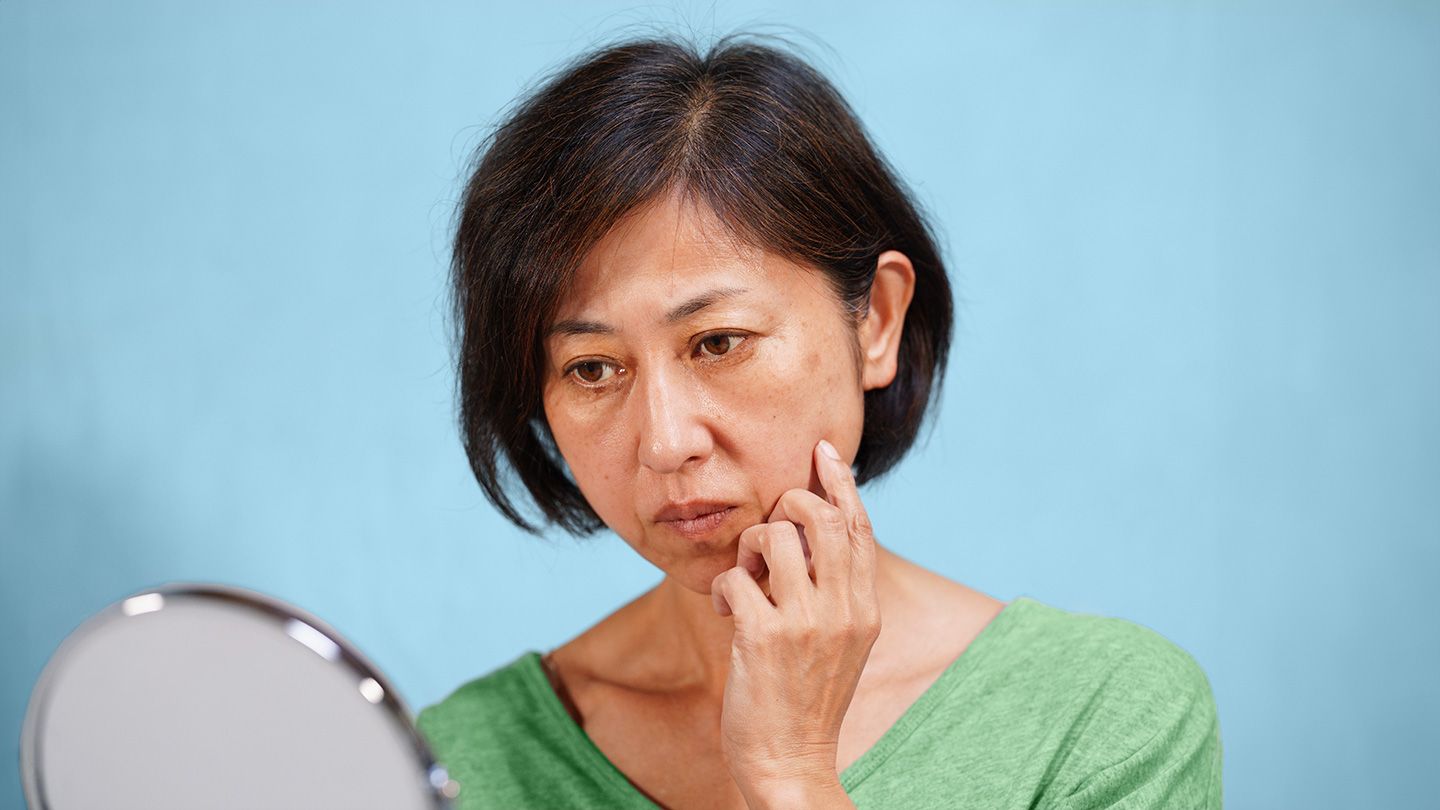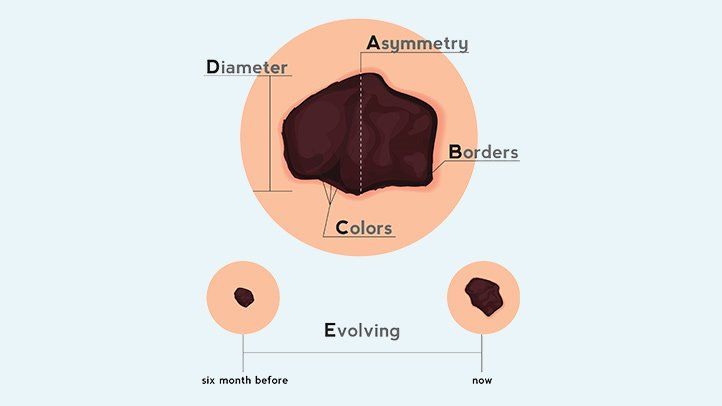Understanding Sunspots
Sunspots, also known as age spots, liver spots, or solar lentigines, are flat, brown or tan patches that appear on the skin, primarily in areas that have been exposed to the sun. These spots are a result of years of sun exposure and are common among older adults.
What Causes Sunspots?
Sunspots are caused by an overproduction of melanin, the pigment responsible for skin color, in response to ultraviolet (UV) radiation from the sun. As we age, our melanocytes (the cells that produce melanin) become more active, leading to the formation of sunspots. These spots are typically harmless and do not pose a significant health risk.
Appearance and Distribution
Sunspots can vary in size, ranging from freckle-sized spots to larger patches. They are usually oval or round in shape and have a flat, smooth surface. Sunspots are commonly found on areas that receive the most sun exposure, such as the face, hands, arms, and shoulders.
Understanding Melanoma
Melanoma, on the other hand, is a type of skin cancer that arises from the melanocytes in the skin. It is considered the most serious form of skin cancer due to its ability to spread to other parts of the body if not detected and treated early.
What Causes Melanoma?
Melanoma is primarily caused by excessive exposure to ultraviolet (UV) radiation from the sun or tanning beds. However, there are other risk factors that can increase an individual's chances of developing melanoma, such as a family history of skin cancer, numerous moles, fair skin, and a weakened immune system.
Appearance and Distribution
Melanoma can occur anywhere on the body, including areas that are not typically exposed to the sun. Unlike sunspots, melanoma lesions often have an irregular shape, uneven borders, and a multicolored appearance (brown, black, pink, red, white, or blue). They may also change in size, shape, or color over time.
Distinguishing Between Sunspots and Melanoma
While sunspots and melanoma can sometimes appear similar, there are distinct differences that can help you differentiate between them. Recognizing these differences is crucial for early detection and proper treatment.
The ABCDE Method
Dermatologists often use the ABCDE method to identify potential melanoma lesions:
A - Asymmetry: Melanoma lesions are often asymmetrical, with one half not matching the other.
B - Border: Melanoma lesions typically have irregular, ragged, or blurred borders.
C - Color: Melanoma lesions can have a variety of colors, including shades of brown, black, pink, red, white, or blue.
D - Diameter: Melanoma lesions are often larger than 6 millimeters in diameter (about the size of a pencil eraser).
E - Evolution: Melanoma lesions can change in size, shape, or color over time.
In contrast, sunspots are typically symmetrical, have smooth borders, and are a uniform shade of brown or tan. They are also generally smaller in size and do not change over time.
Skin Cancer Screening and Diagnosis
Regular skin cancer screenings by a qualified dermatologist are crucial for early detection and proper diagnosis of any suspicious skin growths. If a lesion displays any concerning features, such as those outlined in the ABCDE method, a biopsy may be recommended to determine if it is cancerous or benign.
Prevention and Early Detection
While sunspots are generally harmless, it's essential to take steps to prevent the development of melanoma and other forms of skin cancer. Early detection is key to improving treatment outcomes and survival rates.
Sun Protection
Protecting your skin from excessive UV exposure is the most effective way to reduce the risk of melanoma and other skin cancers. This includes wearing protective clothing, seeking shade during peak sun hours, and using broad-spectrum sunscreen with an SPF of 30 or higher, even on cloudy days.
Self-Examination and Regular Check-ups
Perform regular self-examinations of your skin, checking for any new or changing moles, growths, or spots. If you notice anything suspicious, schedule an appointment with a dermatologist for a professional evaluation. Additionally, it's recommended to have a full-body skin examination by a dermatologist at least once a year to ensure that any potentially cancerous lesions are detected early.
Conclusion
While sunspots and melanoma may share some visual similarities, they are distinct skin conditions with different causes, appearances, and health implications. Understanding the differences between these two skin growths is crucial for early detection and proper treatment, particularly in the case of melanoma, which can be life-threatening if left undiagnosed and untreated. By practicing sun protection, performing regular self-examinations, and scheduling annual skin cancer screenings with a dermatologist, you can significantly reduce your risk of developing melanoma and increase your chances of early detection and successful treatment if it does occur.
FAQs
Can sunspots turn into melanoma?
No, sunspots (also known as age spots or liver spots) are generally harmless and cannot directly turn into melanoma. Sunspots are flat, brown or tan patches caused by excess melanin production due to UV exposure, while melanoma is a type of skin cancer that arises from abnormal melanocytes in the skin.
How can I tell if a mole is cancerous?
Dermatologists often use the ABCDE method to identify potential melanoma lesions. Look for asymmetry, irregular borders, multiple colors (brown, black, pink, red, white, or blue), a diameter larger than 6 millimeters, and any evolution or changes in size, shape, or color over time. If a mole displays any of these concerning features, it's essential to have it evaluated by a dermatologist.
Can melanoma appear on areas not exposed to the sun?
Yes, melanoma can develop on any part of the body, including areas not typically exposed to the sun. While UV exposure is a significant risk factor for melanoma, other factors such as genetics, immune system health, and the presence of numerous moles can also contribute to the development of melanoma in areas not directly exposed to sunlight.
How often should I have a skin cancer screening?
It is generally recommended to have a full-body skin examination by a dermatologist at least once a year, even if you don't notice any concerning skin growths or changes. Regular skin cancer screenings are crucial for early detection and proper diagnosis of any potentially cancerous lesions.
Can sunspots be prevented or treated?
Sunspots can be prevented by practicing sun protection measures, such as wearing protective clothing, seeking shade during peak sun hours, and using broad-spectrum sunscreen with an SPF of 30 or higher. While sunspots are harmless, some individuals may choose to treat them for cosmetic reasons. Treatment options include topical creams, chemical peels, laser treatments, or cryotherapy, all of which should be performed under the guidance of a dermatologist.
Disclaimer: This article is for informational purposes only and does not constitute medical advice. Always consult with a healthcare professional before starting any new treatment regimen.
Related Coverage
Sun spots are harmless, but melanoma is deadly. Learn to identify irregular borders, changing moles, and other signs that distinguish melanoma from benign sun spots....
Learn how applying Vicks VapoRub to acne-prone skin may help reduce pimples and breakouts. Understand the benefits, risks, tips for usage and more for using this home remedy....
Knowing the ABCDEs of melanoma is crucial for early detection. Learn the signs and symptoms, perform regular self-exams, and seek professional advice for suspicious moles....
Learn about the best and worst types of focaccia bread for a diabetic diet. Get tips on calories, portions, and how to incorporate focaccia safely....
Feeling intensely lonely at night is common but signals a need for change. Learn why isolation worsens after dark, impacts of chronic loneliness, and techniques to regain control....
Sunspots are flat, brown skin spots caused by sun exposure and aging. Learn to identify sunspots, prevent more sun damage, and explore effective removal treatments....
Learn how to identify stage 1 melanoma moles using the ABCDE guidelines. See pictures, prognosis, treatment information for early stage melanoma caught before advanced spread....
Online melanoma recurrence risk calculators use tumor depth, nodes, and more to estimate 5/10 year odds. Lower risk by practicing sun safety, nutrition, and early detection....
Learn how to distinguish harmless brown spots like lentigos, sun spots, and age spots from concerning marks like melanoma. Compare brown spot pictures to assess skin changes....
ESPN college football reporter Holly Rowe was diagnosed with stage 4 melanoma in 2022. But who is by her side during this battle? Learn more about her personal life....









